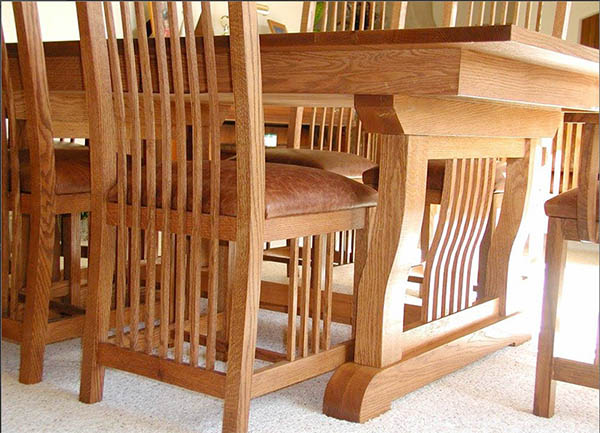
As we head into January, woodworker Brian Murphy is getting ready for the 10th iteration of a woodworking furniture show he founded to highlight the work being done in his region.
“Wood X, a Furniture Show,” will run from January 11 to February 1, 2019 at the Escondido Arts Partnership Municipal Gallery in Esconido, California. Also a founding member of the San Diego Fine Woodworkers Association, Brian started the Escondido show after wondering “what would happen if I had a show in January which didn’t conflict with the show in June?” Another motivation was his involvement in the Escondido Chamber of Commerce and his belief in its mission: “I truly believe that the chamber is the voice of business and the more that you promote your business within your community, the better it is for everyone. I’m a businessman working in my community, and I support businesses in my community.”
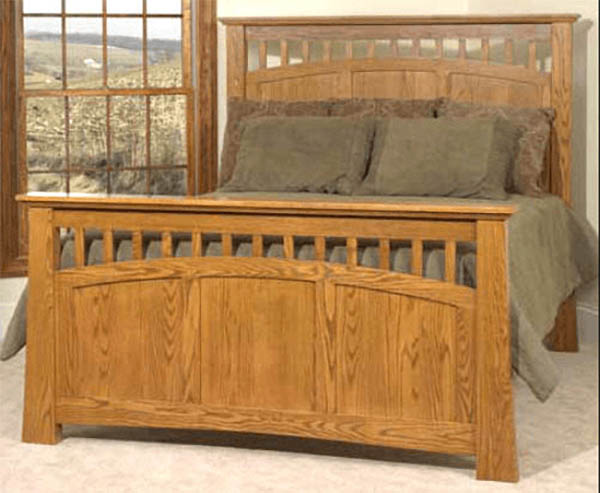
His own business is Murphy’s Fine Woodworking, which focuses on custom-built furniture, largely in the Arts and Crafts style. Previous business ventures have also included the proprietorship of woodworking retail stores The Cutting Edge, from 1980 to 1989, and American Furniture Design woodworking plans company, sold within the past few years to Lee Valley Tools.
He’d done some smaller woodworking projects before then, but became more involved and started building custom furniture while running The Cutting Edge. “I keep a diary, so every piece of furniture that I have made [is recorded]. The first one was ‘001,’ and it was done in 1982. It was a butcher block mobile kitchen unit, hard rock maple top, birch sides, inserts and walnut sliding doors with dovetails.” Piece number two was a grandfather clock in white oak with Carpathian elm burl inserts on the crown and base. Piece number 256 was a table that a customer picked up in December.
“The adventure of being a custom woodworker [is], unlike the big store manufacturers, when we build chairs and build furniture, we select the perfect board – not pieces, the board – to showcase the piece.” For example, the arms on a chair “are usually so stunning in grain pattern that they just kind of jump at you,” Brian said.
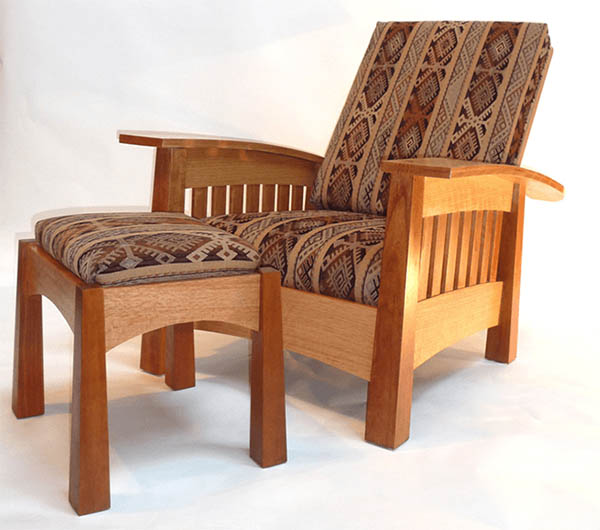
Chairs are a specialty of his. He’s working on two new ones, one for his own show in January and one as an entry for the San Diego Fine Woodworkers Show in June, but over the years, counting those he has made and those he has taught, Brian estimates “I have produced and influenced almost 100 chairs. That’s a lot of chairs.”
While most of his chairs are large, they are built to fit the person. “I had a gal who was extremely arthritic, and the chair had to be narrower and shorter for her to get in and out of the chair.” Stylistically, they owe a lot to the Arts and Crafts movement. “Some of that furniture was truly ultra-simple, so in my adventure with Arts and Crafts, it has been to modernize it just a bit, to make the chairs so comfortable that when you sit in them, you take a nap. In the original Stickley chairs, you can’t do that,” Brian said.
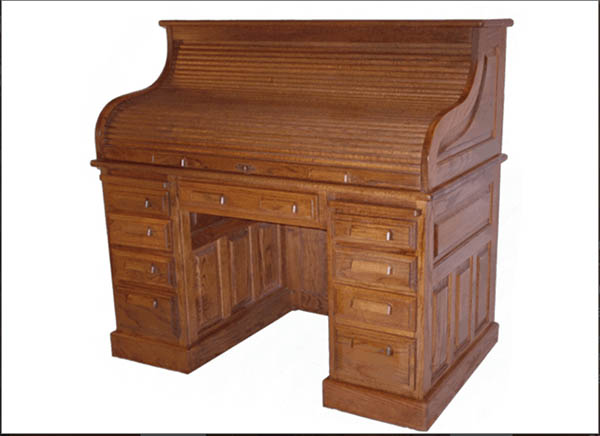
Still, he is fond of the Arts and Crafts styles. While he has produced “all kinds of furniture, from Queen Anne sideboards to rolltop desks – you name it, I have built it,” it’s the Arts and Crafts style that most appeals to him. “I fell in love with Gustav Stickley,” he explained. “I loved the turn-of-the-century Gustav Stickley, William Morris type concept.”
With the focus on mortise-and-tenon joinery in this type of furniture, Brian notes that his floor-mounted mortising machine has been a worthwhile tool investment, helping to ensure that the pieces he builds “will last for a very long time” (at least one client has the Murphy’s Fine Woodworking pieces they own included in a family trust for their children).
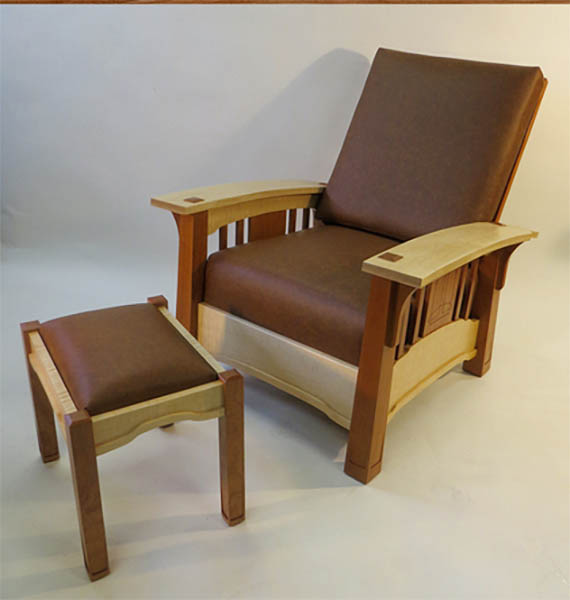
Brian notes that’s also “always developing new stuff, which is fun.” He’s known for a California West Greene and Greene chair which riffs off the influence of the Greene and Greene woodwork in Pasadena’s Gamble House. “It is Arts and Crafts, but it’s a softer look, and it’s truly a beautiful chair. Stickley is more square and rigid, and the Greene and Greene style is softer.”
In addition to building his own chairs, Brian has taught chairmaking at the now-defunct American Sycamore Retreat, as well as smaller tutorials in his own shop – including, through a school work-study program, to his grandson, Noah, who entered and sold the chair he built through that year’s furniture show. “Not everybody has that truly unique opportunity with your grandchildren,” Brian said. “It’s pretty special.”
And yes, the show is a for-sale show, with about 30 participants this year – up from six the first year. “And it’s only furniture. We don’t do anything else. And the pieces are just stunning,” Brian said.





